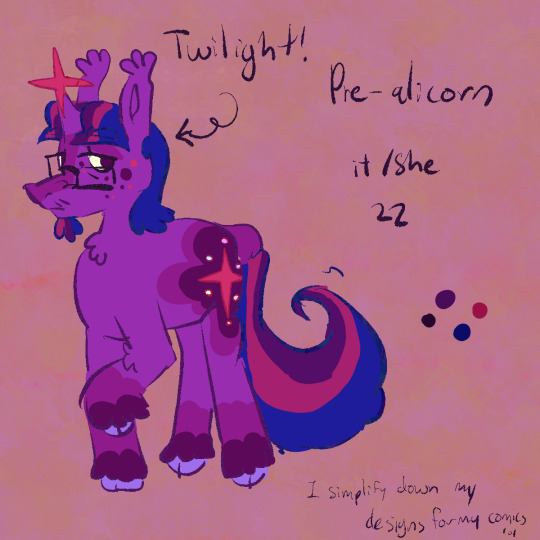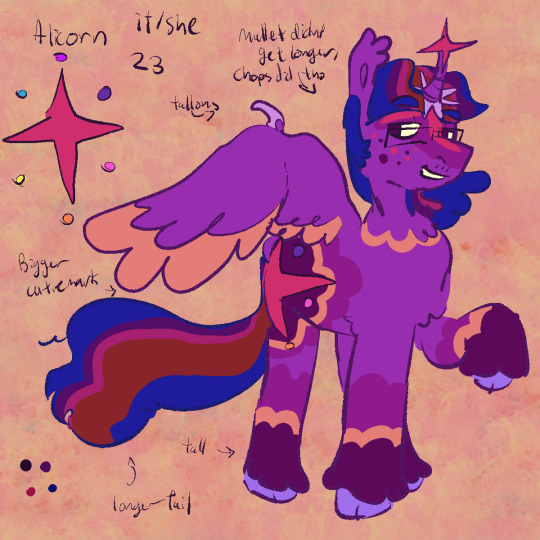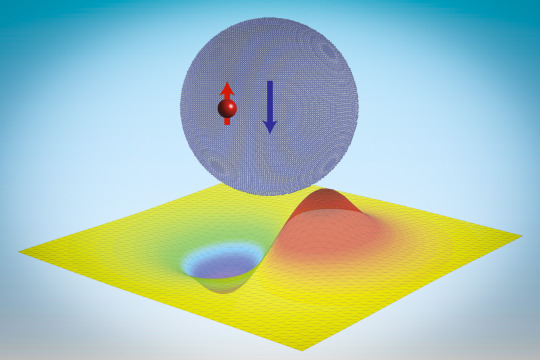#display device
Photo

Victor Ruiz @ Transformator
#Any Vision#Artist#Curtain#Faces#Labels#Spectacle#T-shirt#Under Exposed#Visual effect lighting#art#audience#concert#crowd#darkness#display device#electric blue#entertainment#event#fun#magenta
6 notes
·
View notes
Text
Analysis of the functions of commonly used electronic components
I published an article about "The Role of Commonly Used Electronic Components", welcome to check it out!
Article address: https://www.dhsic.com/news/98

#Electronic components function#Function of components#Electronic Component#Resistor#capacitor#Inductor#Semiconductor device#integrated circuit#microcontroller#sensor#display device
0 notes
Text
YOOO I MADE SPAMTON SYMBOL ART
███████████████████████████████████████ ███████████████████████████████████████ ██████████░░░░░░░██████████████████████ ████████░░███░█░░░░░███████████████████ █████░█░███░██░██░░░░░░████████████████ ███░░█░░█░░█░░░░░░██░░░░░██████████████ ███░░█░░░░░░░░░░░░░░░░░░░░░░██████░░███ █████░░░░░░░░░░░░░░░░░░░░░░░░░░░░░░████ ███████░░░░██████████░░░░░░░░░░░░████░█ ████████░██████████████░░░░░░░░░░░░░░██ ████████░█░░░░████░░░░██░░░░░░░░░░░████ ███████░█░██░▒░██░░█░▒░█░░░░░░░░░██████ ███████░████░░░█████░░░█░░░░░░░░░░░░░██ ██░░░░░░░░░░░░██████░░███░░░░░░░███████ █████░░████████████▒▒▒▒██░░░░███░██████ ███████░░░░█████████░░███░░░███████████ ███████░██░░░░░░░░░░█░██░░░████████████ ████████░██░████████░██░░░██░██████████ █████████░██░█████░░██░░░░░░███████████ ██████████░█░░░░░░███░░░░░░░░░█████████ ███████████░░█████░░░██░░░░████████████ █████████████░░░░░█████████████████████ ███████████████████████████████████████ ███████████████████████████████████████
#spamton#yes that's it#just wanted you to see ehehe#sorry for thE SPAM!!! HAHAHAHHA!!!#hehehe he!#((a picture of it for anyone whose device doesn't display it properly is in my reblog of this post))
243 notes
·
View notes
Text

TODAY.
#cult of the lamb#cotl#narilamb#cotl lamb#cotl narinder#cotl fanart#narinder#true devotion#cw eyestrain#its been a minute since I've posted anything cotl here#sorry if the colors are blinding my monitor doesnt display things nearly as bright as they show up on any other device.#but we all know whats about to happen to that poor cat right?
117 notes
·
View notes
Text
🧃🐛 sip sip juice
89 notes
·
View notes
Note
can u draw ur twilight design? i like it a lot ^^


YEAH ANYTIME!!!!!!!!!!!!!! twi's design has stayed the most consistent out of all my main character redesigns, i think Ive been drawing it like this since.. 2019? maybe 2020, but thats still 4 years hehe!!!
#shout out to my gf for reminding me that the colors on my screen display diffrent than for her computer/ my phone/ most devices because#twi was NEON NEON on accident#color swatches were for her line art but i forgot to do her horn in the 2nd one#mlp#my little pony#mlp twilight sparkle#twilight sparkle#salad says!#friends!#i hc shes the youngest out of the mane 6 btw the rest are in their late and mid 20s
13 notes
·
View notes
Note
Sad part is ya can't even see the badges on mobile
i only ever use tumblr on desktop (even when i'm on my phone) the app sounds like the very definition of what earned tumblr the name 'hellsite'
#questions and answers#modellingispainge#needless to say i've never used it and never plan to#whats the point of giving people the ability to buy cute lil badges if they wont even display#on what i believe is the most commonly used device for using tumblr#smh
20 notes
·
View notes
Photo

099 / Supply.Family / Pro Display / Mockup / 2024
Download
#099#supply.family#pro display#mockup#2024#device#desktop#digital#numbers#screen#shopsystem#typography
20 notes
·
View notes
Text









TERRENCE MANN as LARRY in A CHORUS LINE (1985)
#storytime: the old laptop that I gif on has really dull colour display so I always double-check my work on other devices#and to be honest I wasn't expecting the haunted doll situation in the third gif but I'm enjoying it#a chorus line#a chorus line 1985#terrence mann#michael douglas#alyson reed#sharon brown#filmedit#moviegifs#movieedit#80s
21 notes
·
View notes
Text
*elias voice* hitting the bong is like sex to me. it’s phallic, jonathan.
#i can’t stop thinking about him saying this. i can hear it so clearly in my mind#also elias would definitely be objectum for smoking devices. he’s been keeping the same wooden tobacco pipe with him since jonah’s body.#but he’s also fascinated by modern day cannabis culture. i think he’d have a blast trying out different concentrates n shit#he goes to tha smoke shop and flirts with the giant fancy bongs they have on display#hakshsjshs OKAY I GOTTA STOP#anyway#tma#the magnus archives#elias bouchard#jonelias#do not archive#drug mention#shut that damn dog up
18 notes
·
View notes
Photo

HAMMA vol.6: Anna Borsuk @ Ciało
#Any Vision#Carmine#Labels#LensTagger#Visual effect lighting#art#automotive lighting#darkness#display device#electric blue#entertainment#event#flooring#font#fun#graphic design#graphics#heat#human leg#lens flare
1 note
·
View note
Text
okay i've answered my own question and i think i can say that the purple/pink that shows up when ember & wade's orange & blue mix, usually on wade when he's close enough to ember, IS additive color mixing!
i remembered that some physics site might have an interactive additive light toy, and:

turning down the green creates the orange (instead of yellow) and cerulean/azure (instead of cyan), and the combination of those colors Is a pinker/lighter magenta!
put that color against a screenshot:

it's the reflection of ember's light off wade: the brighter parts of her are yellow, and the brighter part of her reflection in him is an even brighter pink, closer to white, which lines up with the colors mixing additively, since yellow has more green light than orange, and this [combo of their colors] pink is the result of what would be white light with some of the green taken out. add it back in, and it's closer to white
i think it's really neat; love that for them
#added the site i used as the source....adjust your own RGB levels (on the site. or your device's display?)#the tragic combo of growing up w/a desktop where there was a little wheel attached to do just that that was REALLY fun to stim with#nonzero times as a child messing up the rgb display balance because of it lol....had an indentation; grooves; went clickclickclick#elemental#elemental 2023#pixar elemental#wade ripple#ember lumen#also ofc i'm hyped to have successfully worked out some additive color mixing in my head lol#whom up refracting & reflecting (the latter applies here) (this color mixing is less relevant when wade Refracts her light i think)#(b/c that's different anyways lol....)
36 notes
·
View notes
Text

some older humies and not-quite-humies :3
#hfjone#object shows#atom one#texty one#humanization#texty uses a tts device but usually keeps audio off#they altered one of the displays to show on the face screen ^_^#unrelated but i think they would rlly like custom keyboards#with loud clicky keys#you know#like me :3#click click click clicka clack clack click#my art !
173 notes
·
View notes
Text
love spotify. shame it never tells you what fucking email you used to sign up or what your password is.
#I JUST WANNA LOG ON WITH ANOTHER DEVICE#BUT I CANT REMEMBER WHICH PASSWORD. NOR EMAIL.#AND THE AUTOGENERATED USERNAME SUCKS AND I BARELY EVEN KNOW IF IT WORKS FOR LOG IN#BC AGAIN. IDK THE PASSWORK EITHER.#AND THE APP WHICG I AM CURRENTLY LOGGED IN ON!!!!!!! DOESNT DISPLAY *ANY* OF THAT INFO!!!!!!!!!!
6 notes
·
View notes
Text

my new OC for our non-existent DND campaigns. i tried to style her robes similarly to my culture’s traditions ;_;
#art#art appreciation#digital art#my art#dnd#dungeons and dragons#dungeons and drawings#dnd oc#dnd elf#арткозацтво#украрт#dnd art#укртумбочка#can i just say that i hate how colors display differently on each device#ugh
50 notes
·
View notes
Text
MIT researchers discover “neutronic molecules”
New Post has been published on https://thedigitalinsider.com/mit-researchers-discover-neutronic-molecules/
MIT researchers discover “neutronic molecules”


Neutrons are subatomic particles that have no electric charge, unlike protons and electrons. That means that while the electromagnetic force is responsible for most of the interactions between radiation and materials, neutrons are essentially immune to that force.
Instead, neutrons are held together inside an atom’s nucleus solely by something called the strong force, one of the four fundamental forces of nature. As its name implies, the force is indeed very strong, but only at very close range — it drops off so rapidly as to be negligible beyond 1/10,000 the size of an atom. But now, researchers at MIT have found that neutrons can actually be made to cling to particles called quantum dots, which are made up of tens of thousands of atomic nuclei, held there just by the strong force.
The new finding may lead to useful new tools for probing the basic properties of materials at the quantum level, including those arising from the strong force, as well as exploring new kinds of quantum information processing devices. The work is reported this week in the journal ACS Nano, in a paper by MIT graduate students Hao Tang and Guoqing Wang and MIT professors Ju Li and Paola Cappellaro of the Department of Nuclear Science and Engineering.
Neutrons are widely used to probe material properties using a method called neutron scattering, in which a beam of neutrons is focused on a sample, and the neutrons that bounce off the material’s atoms can be detected to reveal the material’s internal structure and dynamics.
But until this new work, nobody thought that these neutrons might actually stick to the materials they were probing. “The fact that [the neutrons] can be trapped by the materials, nobody seems to know about that,” says Li, who is also a professor of materials science and engineering. “We were surprised that this exists, and that nobody had talked about it before, among the experts we had checked with,” he says.
The reason this new finding is so surprising, Li explains, is because neutrons don’t interact with electromagnetic forces. Of the four fundamental forces, gravity and the weak force “are generally not important for materials,” he says. “Pretty much everything is electromagnetic interaction, but in this case, since the neutron doesn’t have a charge, the interaction here is through the strong interaction, and we know that is very short-range. It is effective at a range of 10 to the minus 15 power,” or one quadrillionth, of a meter.
“It’s very small, but it’s very intense,” he says of this force that holds the nuclei of atoms together. “But what’s interesting is we’ve got these many thousands of nuclei in this neutronic quantum dot, and that’s able to stabilize these bound states, which have much more diffuse wavefunctions at tens of nanometers [billionths of a meter]. These neutronic bound states in a quantum dot are actually quite akin to Thomson’s plum pudding model of an atom, after his discovery of the electron.”
It was so unexpected, Li calls it “a pretty crazy solution to a quantum mechanical problem.” The team calls the newly discovered state an artificial “neutronic molecule.”
These neutronic molecules are made from quantum dots, which are tiny crystalline particles, collections of atoms so small that their properties are governed more by the exact size and shape of the particles than by their composition. The discovery and controlled production of quantum dots were the subject of the 2023 Nobel Prize in Chemistry, awarded to MIT Professor Moungi Bawendi and two others.
“In conventional quantum dots, an electron is trapped by the electromagnetic potential created by a macroscopic number of atoms, thus its wavefunction extends to about 10 nanometers, much larger than a typical atomic radius,” says Cappellaro. “Similarly, in these nucleonic quantum dots, a single neutron can be trapped by a nanocrystal, with a size well beyond the range of the nuclear force, and display similar quantized energies.” While these energy jumps give quantum dots their colors, the neutronic quantum dots could be used for storing quantum information.
This work is based on theoretical calculations and computational simulations. “We did it analytically in two different ways, and eventually also verified it numerically,” Li says. Although the effect had never been described before, he says, in principle there’s no reason it couldn’t have been found much sooner: “Conceptually, people should have already thought about it,” he says, but as far as the team has been able to determine, nobody did.
Part of the difficulty in doing the computations is the very different scales involved: The binding energy of a neutron to the quantum dots they were attaching to is about one-trillionth that of previously known conditions where the neutron is bound to a small group of nuclei. For this work, the team used an analytical tool called Green’s function to demonstrate that the strong force was sufficient to capture neutrons with a quantum dot with a minimum radius of 13 nanometers.
Then, the researchers did detailed simulations of specific cases, such as the use of a lithium hydride nanocrystal, a material being studied as a possible storage medium for hydrogen. They showed that the binding energy of the neutrons to the nanocrystal is dependent on the exact dimensions and shape of the crystal, as well as the nuclear spin polarizations of the nuclei compared to that of the neutron. They also calculated similar effects for thin films and wires of the material as opposed to particles.
But Li says that actually creating such neutronic molecules in the lab, which among other things requires specialized equipment to maintain temperatures in the range of a few thousandths of a Kelvin above absolute zero, is something that other researchers with the appropriate expertise will have to undertake.
Li notes that “artificial atoms” made up of assemblages of atoms that share properties and can behave in many ways like a single atom have been used to probe many properties of real atoms. Similarly, he says, these artificial molecules provide “an interesting model system” that might be used to study “interesting quantum mechanical problems that one can think about,” such as whether these neutronic molecules will have a shell structure that mimics the electron shell structure of atoms.
“One possible application,” he says, “is maybe we can precisely control the neutron state. By changing the way the quantum dot oscillates, maybe we can shoot the neutron off in a particular direction.” Neutrons are powerful tools for such things as triggering both fission and fusion reactions, but so far it has been difficult to control individual neutrons. These new bound states could provide much greater degrees of control over individual neutrons, which could play a role in the development of new quantum information systems, he says.
“One idea is to use it to manipulate the neutron, and then the neutron will be able to affect other nuclear spins,” Li says. In that sense, he says, the neutronic molecule could serve as a mediator between the nuclear spins of separate nuclei — and this nuclear spin is a property that is already being used as a basic storage unit, or qubit, in developing quantum computer systems.
“The nuclear spin is like a stationary qubit, and the neutron is like a flying qubit,” he says. “That’s one potential application.” He adds that this is “quite different from electromagnetics-based quantum information processing, which is so far the dominant paradigm. So, regardless of whether it’s superconducting qubits or it’s trapped ions or nitrogen vacancy centers, most of these are based on electromagnetic interactions.” In this new system, instead, “we have neutrons and nuclear spin. We’re just starting to explore what we can do with it now.”
Another possible application, he says, is for a kind of imaging, using neutral activation analysis. “Neutron imaging complements X-ray imaging because neutrons are much more strongly interacting with light elements,” Li says. It can also be used for materials analysis, which can provide information not only about elemental composition but even about the different isotopes of those elements. “A lot of the chemical imaging and spectroscopy doesn’t tell us about the isotopes,” whereas the neutron-based method could do so, he says.
The research was supported by the U.S. Office of Naval Research.
#000#2023#Analysis#artificial#atom#atomic#atomic nuclei#atoms#Capture#chemical#chemistry#clusters#Collections#colors#Composition#computer#crystal#crystalline#development#devices#dimensions#direction#display#DMSE#dynamics#effects#electromagnetic#electron#electrons#energy
2 notes
·
View notes